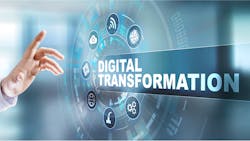Download this article in PDF format.
As companies ramp up their digital transformation efforts and work harder to reduce the amount of paper, email, spreadsheets and manual processes that their employees rely on, more eyes are turning to the procurement department. A place where many buyers still manually exchange procurement data with their suppliers via email and fax, this department tends to benefit greatly from automation and digitalization solutions.
“B2B buyers are using e-procurement systems to gain control over their purchasing expenditures, control procurement workflows and optimize their entire logistics process,” Peter Lucas writes in “Addressing the need for integrated procurement systems.”
“Experts say companies on the supply side of procurement can play a more prominent role in helping buyers realize the efficiencies that come with electronic procurement systems integrated with other business operations software,” Lucas points out, noting that e-procurement as a whole is a concept that’s not always “well understood” by suppliers.
That reality can complicate a company’s journey toward more automated and digitalized procurement processes. Of course, the same can be said for pretty much any department—manufacturing, distribution, shipping, sales, marketing and so forth—but the “connectedness” that procurement has with hundreds or even thousands of outside sources of supply creates different complications.
“Even if a supplier has the technological resources to support e-procurement integrations for its buyers, the connections they have built are typically custom jobs that were expensive to build and are technologically complex to maintain,” Lucas writes. “As a result, e-procurement integration is not necessarily something suppliers [rely on], despite the benefits it can bring to their customers.”
Steps to Greater Procurement Efficiency
By definition, an integrated or e-procurement system is a software application that automates the acquisition process. The system helps buyers process the delivery of goods or/and services in a detailed manner and is made up of a framework centered on formulating, approving, funding and tracking requisitions.
Automating the many steps that go into acquiring goods and services may sound feasible in theory, but the reality is that many companies are still using the “old ways” of doing things in their procurement departments.
“E-procurement integration is a space that is not all that well understood by suppliers,” TradeCentric’s Tom Roberts tells DigitalCommerce360. “But e-procurement is growing about 20% annually, so having a proactive marketing campaign around e-procurement integration can educate buyers so they can take advantage of ecommerce integration and procurement automation.”
“By centralizing procurement data and digitizing processes, e-procurement helps thousands of companies improve efficiency, reduce rogue spending and gain greater insight into supplier relationships,” Kevin Kazenmayer writes in “4 ways integration adds value to your e-procurement system.” Once in place, integrated procurement provides core benefits like:
- Stronger relationships with preferred suppliers. “Strong, long-lasting supplier relationships improve supply chain predictability and consistency,” Kazenmayer states. “They also generate significant cost savings. E-procurement integration provides mutual benefits to enhance buyer and supplier relationships.”
- Access to automation. Inaccurate procurement data can be a major problem for buyers and manual data entry is the most common culprit of inaccurate data. “Automated data transfer between buyer and supplier systems ensures data is accurate and up to date,” Kazenmayer writes.
- Better spend management. Integrated procurement systems ensure that buyers purchase from approved suppliers and conform to procurement rules and policies. “E-procurement integration ensures accurate product data, which improves user access controls (i.e. who can buy from what supplier),” he says, “and facilitates a more streamlined internal approval process.”
- Faster procurement cycle times. Placing an order often involves multiple software systems, document types and communication channels. Having to transfer data and other information across these systems can add significant time and effort to the process. By adding automation to the equation, procurement teams are freed up from mundane, repeatable tasks and able to focus on more important projects.
“Automated systems accelerate the speed at which documents and data are exchanged while ensuring information always arrives at the right destination,” Kazenmayer writes. “This not only helps businesses receive orders faster, but it also reduces cost and time to help companies achieve greater procurement efficiency.”
About the Author

Bridget McCrea
Contributing Writer | Supply Chain Connect
Bridget McCrea is a freelance writer who covers business and technology for various publications.






